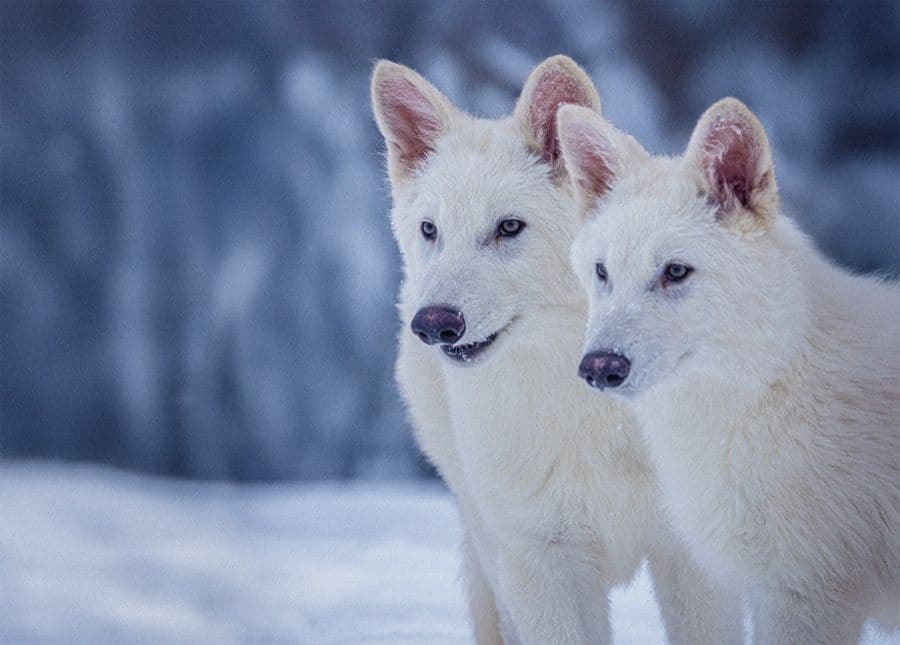Dire Wolves Return – Or Just in Our Imagination?
Introduction
Imagine looking into the eyes of a gigantic canid that roamed the forests of North America over 10,000 years ago – powerful, majestic, and relentless. This very image seems to come alive again, thanks to an ambitious project by the biotechnology company Colossal Biosciences. The recent announcement of the birth of three puppies with dire wolf genes not only captivates the imagination but also ignites heated debates in science, conservation, and ethics.
The Return of the Dire Wolves
Colossal Biosciences, a leading name in the field of "de-extinction," claims to have brought the long-extinct dire wolf back to life. Scientists utilized DNA from two remarkably ancient fossils – a 13,000-year-old tooth from Ohio and a 72,000-year-old skull from Idaho. Using cutting-edge genetic engineering, they edited the genome of gray wolves, which are 99.5 percent genetically identical to dire wolves.
The Birth of the Puppies
The result: Three puppies named Romulus, Remus, and Khaleesi. These animal wonders are not only distinguished by their proud appearance with thick, white fur and mane-like neck hair but also by their size – about 20 percent larger than typical gray wolves. The puppies, currently kept in a specially secured 2,000-acre nature reserve, are not candidates for a swift return to the wild; instead, they serve as living research units and ambassadors for the protection of modern canids.
The Complex Path to Revitalization
The path to revitalization was anything but simple: Scientists had to extract DNA from prehistoric fossils and also edit epithelial progenitor cells – a total of 20 targeted gene edits across 14 genes. In an unusual step, edited cells were implanted into egg cells from domestic dogs, whose DNA had been removed, before they served as surrogate mothers. The surrogate mothers, subsequently cared for by animal welfare organizations, played a crucial role in this process without suffering harm themselves.
Controversies and Criticism
However impressive this technical feat may be, it is not without controversy. Many experts question: Are these animals truly resurrected dire wolves or merely modified gray wolves that possess some prehistoric traits? Critics argue that the animals, raised in modern ecosystems and not living in true packs, can never fully represent the complete picture of their extinct counterparts. A paleontologist from Des Moines University expressed, “We already have difficulties with today’s wolves – why should we introduce more ‘other’ species?”
Ethical and Ecological Questions
The debate goes beyond scientific inquiries. The revival of extinct species touches on fundamental ethical and ecological issues. Some see the technology as a beacon of hope that could provide important impulses for conservation – comparable to current projects aimed at reviving the woolly mammoth or efforts to restore genetic diversity in the endangered red wolf. Others, however, fear that introducing such ‘new’ species into modern ecosystems could lead to unpredictable consequences and warn of an ethical dilemma: Is it justifiable to invest resources in the return of long-gone species while numerous species alive today struggle for survival?
The Human Component
A look behind the scenes also reveals the human component behind Colossal Biosciences. Founders like Ben Lamm and George Church, supported by prominent investors like Tiger Woods and Peter Jackson, rely on technological advancement to make the seemingly impossible possible. Yet even at the heart of these ambitious projects, emotions and symbolic meanings intertwine: Indigenous communities, such as the MHA Nation in North Dakota, see these developments as a reminder not to forget the responsibility of being stewards of the Earth.
Conclusion
Although the reborn dire wolves remain in their 2,000-acre nature reserves and serve as living research units, the symbolic break from the past is unmistakable. The exciting blend of technological advancement, scientific curiosity, and ethical responsibility clearly provides ample material for discussion – not only among experts but also in the broader public.
Regardless of whether we perceive the new animals as true dire wolves or as impressive feats of genetic engineering, one thing remains clear: Colossal Biosciences' project opens a window into a future where the boundaries between extinct and living increasingly blur. The question that occupies us all is: How far are we willing to go when it comes to reviving lost chapters of natural history? The answer will likely be just as controversial as it is fascinating in the coming years.

About Kiley
Author at Autark News
